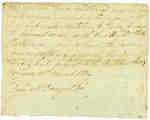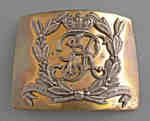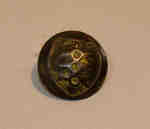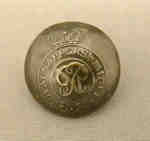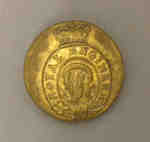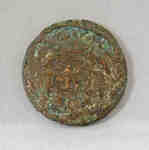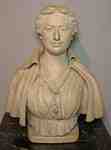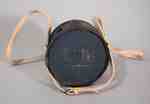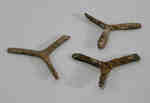Résultats
- A notice of General Orders from the Military Secretary's Office in Kingston on July 17, 1815 concerning the distribution of land to disbanded soldiers. It states that Alexander McDonell, Esq., was apA notice of General Orders from the Military Secretary's Office in Kingston …
- This document, dated March 1813, is from Macdonnell to General Daniel McDougal authorizing the formation of a militia under his command.This document, dated March 1813, is from Macdonnell to General Daniel McDougal …
- The document is a transcript of an order of retirement for George Young who worked as the Master Carpenter at Fort George.The document is a transcript of an order of retirement for George …
- This document, dated July 24th, 1814, is an abstract of pay in the amount of 70 pounds, 8 shilling, 10 ½ pence due to the 7th (Captain Dennis's) Company. It is believed that this company belongs to tThis document, dated July 24th, 1814, is an abstract of pay in …
- This is a brass belt buckle that was found in the town of Niagara. It is believed to have belonged to a member of the British light infantry or regular troops because of the lion’s head decoration. FThis is a brass belt buckle that was found in the town …
- This plate is believed to have been used between 1796 and 1828 for a Heavy Cavalry Officers’ waist belt. It is gilt with a silver crest that has “GR” in the centre, with a Hanoverian crown on top, anThis plate is believed to have been used between 1796 and 1828 …
- This brass button was likely worn by a member of the Royal Artillery, as it features their crest.This brass button was likely worn by a member of the Royal …
- This button likely belonged to a member of the Royal Sappers and Miners. The button was produced by button maker, McGowan of London. The button was dug up at Fort George.This button likely belonged to a member of the Royal Sappers and …
- This is a British military button for "Royal Engineers".This is a British military button for "Royal Engineers".
- This is a brass button of the 49th Regiment (Hertfordshire) of the British army. Although the button has some corrosion there is a cipher with the number 49. There were two sizes of buttons worn by tThis is a brass button of the 49th Regiment (Hertfordshire) of the …
- This is a statue of Laura Secord by Mildred Peel. In the late nineteenth century, Laura Secord (1775-1868) became celebrated as an important heroine of the War of 1812-1814, known for her walk from QThis is a statue of Laura Secord by Mildred Peel. In the …
- This iron strongbox was used by a military paymaster, likely for military documents. The strongbox features a hinged lid, handles on both sides and straps forming a pattern of squares with rounded knThis iron strongbox was used by a military paymaster, likely for military …
- This is a War of 1812 soldier’s canteen with wooden slots on the side, two holes, a wooden stopper and is held together by metal bands. The canteen also has a white leather regulation carrying strap.This is a War of 1812 soldier’s canteen with wooden slots on …
- This straight razor from the early 1800s is 14 centimeters long and features a bone handle.This straight razor from the early 1800s is 14 centimeters long and …
- This iron tool was used to strike a flint to create sparks and start a fire. The arms of the tool curve inward, towards the center of the tool. The flint striker is fairly rusted.This iron tool was used to strike a flint to create sparks …
- These prickers, dated 1812, were used as a screwdriver for a musket. It is “Y” shaped, with the top “V” forming the handle and the bottom arm narrowing to fit into the screw. The musket tool was usedThese prickers, dated 1812, were used as a screwdriver for a musket. …
- The sword, which is made of brass and steel, has a lion's head pommel and a curved blade. Along with its scabbard, it is believed to have belonged to the Musician in Captain Raunchey's Volunteers (CoThe sword, which is made of brass and steel, has a lion's …
- This is a wooden ramrod, circa 1812-1814, that was used by the artillery to wedge the ball into the breech of the cannon. 196 cm long and painted black.This is a wooden ramrod, circa 1812-1814, that was used by the …
- This triangular bladed bayonet was designed to fit on the muzzle of a rifle or musket barrel, making it into a close range weapon. This would have been on arguably every soldier’s firearm during theThis triangular bladed bayonet was designed to fit on the muzzle of …
- This musket, circa 1812, is a 3rd Model “Brown Bess” 1790 with an “India Pattern” design. It was a British regulation issue flintlock musket. There are various engravings on the musket that include:This musket, circa 1812, is a 3rd Model “Brown Bess” 1790 with …







